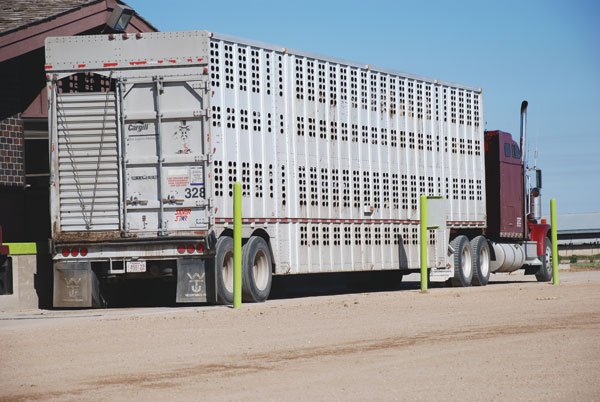Tumbling Futures Suggest Tougher Sledding At Auction Markets
Auction prices last week ran counter to a hasty retreat in cattle futures, as well as continued erosion in wholesale beef values. All of this under the cloud of confusion surrounding lean finely textured beef.
March 31, 2012

Calf and feeder markets last week were like the proverbial duck floating merrily along, while the feet beneath the surface—surrounding markets in this case—pedaled furiously amid the kind of chaotic uncertainty that markets abhor.
Overall, feeder and stocker cattle trended mostly steady to $4 higher, according to the Agricultural Marketing Service (AMS). Analysts at AMS say the exceptions included steady money to $3 lower for yearling feeders weighing more than 850 lbs., as well as prices $4-$8 higher for lightweight stockers located near the vast grazing regions in the Central U.S.
That relative calm belied a week of hasty retreat in the cattle futures markets. Week-to-week, nearby Feeder Cattle (April-Aug) were down an average of $4.46, most of that in the last three sessions. Nearby Live Cattle contracts (Apr-Aug) were down an average of $4.17; the heaviest losses also came in the last three sessions.
There continued to be the drag of eroding wholesale beef values, with Choice boxed beef cutout down $4.04/cwt. week-to-week. Select was $1.93/cwt. lower week-to-week.
Lower wholesale values helped spawn cash fed cattle trade that was mostly $1 lower (mostly $125/cwt.) on a live basis and mostly $1 lower (mostly $202/cwt) in the beef.
Then came Friday’s surprisingly bullish Prospective Plantings and quarterly Grain Stocks reports from USDA that propelled nearby grain contracts up the limit and near the limit. The surge in grain prices, coupled with high fuel costs, is already leading to renewed worries about consumer price inflation.
Over all of this, the cloud surrounding lean finely textured beef (LFTB) grew thicker (see below). Besides the psychological drag, packer kills were down, due at least in part to the necessary retooling of logistics to sort out what to do with the trimmings they were sending to LFTB plants, as well as how to serve customers who no longer want ground beef that contains LFTB.
“Auction receipts were respectable this week but were still more than10% lighter than a year ago, and cash feeder cattle buyers know that offerings will soon dry up,” AMS analysts say. On the other hand, they add, “The pressure from higher feed costs and losses on the board will undoubtedly be felt in next week’s feeder cattle market.”
Incidentally, I visited with Derrell Peel this week about the state of domestic beef demand. He’s the Extension livestock marketing specialist at Oklahoma State University.
“The jury is still out, but I don’t think demand is as weak as wholesale prices might suggest,” Peel says. For one thing, he notes that middle-meat prices are higher than they were a year ago. For another, he points out the monthly Restaurant Performance Index calculated by the National Restaurant Association indicates that food service continues to regain ground lost during the Great Recession.
I also visited with Glynn Tonsor, an agricultural economist at Kansas State University.
Though he expects the Beef Demand Index (BDI) he maintains will be lower in the first quarter this year compared to the previous quarter, and perhaps compared to a year earlier, he points out the BDI increased for six consecutive quarters through the end of last year.
“I don’t think the floor is falling out,” Tonsor says. “I think there has been a pause in some of the bullishness.”
About the Author(s)
You May Also Like




.png?width=300&auto=webp&quality=80&disable=upscale)
